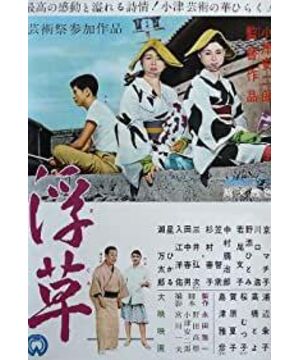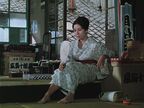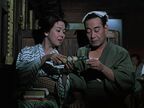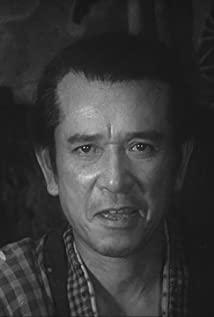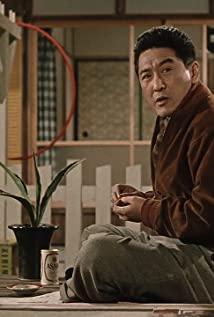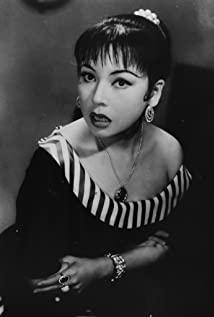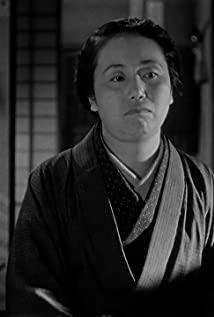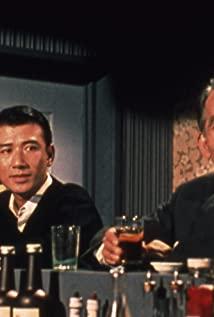"Life has no roots, and it floats like dust on a moor. It's very personal."
Imamura once showed Ozu his script describing life at the bottom, and Ozu asked, "Why do you want to write about these maggot-like people? Imamura replied, "I want to write about people like maggots until I die." Otsu is aesthetic, Imamura is about ugliness. There is no distinction between high and low, only the difference is concerned. The combination of the works of the master and the apprentice is a complete Japan. A contradictory and unified Japan.
Like chrysanthemum and knife, like light and shadow.
As the third color film after "The Flower of the Other Side" and "Good Morning", Ozu's understanding and application of color in "Floating Grass" has reached a new level. The reason for the change is, on the one hand, the re-understanding of the black-and-white silent film "The Story of Floating Grass"; on the other hand, the photographer Kazuo Miyagawa's extremely high attainments in color photography. ("Shadow Samurai" is from his hands)
Japan likes to use "party" to refer to people who have a certain special hobby, and Ozu is a palace-level "red" party. Compared with the previous two color works, the colors used in "Floating Grass" are more intense, bright and lively. Ozu's fascination with "red" is also fully expressed in this work. Red clothes, red flowers, red furniture, and even the fans used to cool off add a touch of red. On the other hand, Ozu's sensitivity to "lines and blocks", that is, to wires, chimneys, towers, tatami mats, Japanese sliding door frames and other objects, the lines and blocks formed by objects, generalizes the specific people and objects in Ozu's lens. For abstract color blocks. "This is why the red, which is usually aggressive and contagious, seems very peaceful in Ozu's hands. Because Ozu can feel the calm under this intense heat, and can release it in the depression." The physical dissonance, Instead, it constitutes a harmony of colors. "
As an aesthetic experience, compared with other senses, such as touch, hearing, and smell, vision is the farthest aesthetic subject from the aesthetic object. It is also the most difficult to detect and feel changes in size and strength. But also because of this, Vision is more easily abused. Ozu's attitude towards this can be felt through his other words: "What the director wants is not for actors to release their emotions, but how to suppress them. "
People who know how to suppress, know how to release. This repression is also manifested in Ozu's aversion to the word "intense". No splattering blood, no shaky footage, no screeching screams. Everything is slow. Life and death partings and love-hate entanglements flow slowly and lingeringly in "Really? Yes". Like a pot of strong tea, like an old word.
At the end of "The Story of the Floating Grass", Kihachi, who rejoins the wandering after arguing with his son, meets Sumiko again at the station. Xiba lit the cigarette but could not find the fire, Chengzi stepped forward to light the cigarette, Xiba took the fire from Chengzi and lit the cigarette. In "Floating Grass", Juro did not take the fire of Miko, and Miko held it so stubbornly. Until Juro stretched out the cigarette in his mouth and lit the fire. The reverberation lingered around the beam for three days and was still in my ears.
Even if I wander, as long as you are happy.
"Someone told me to shoot something different occasionally. I said, I opened a tofu shop, and people who make tofu make curry rice, which can't be delicious."
Ozu, a tofu maker.
View more about Floating Weeds reviews


